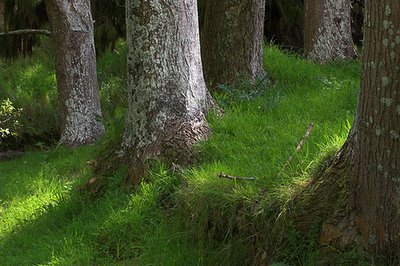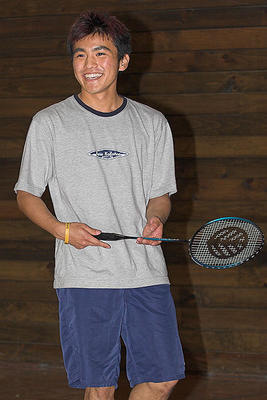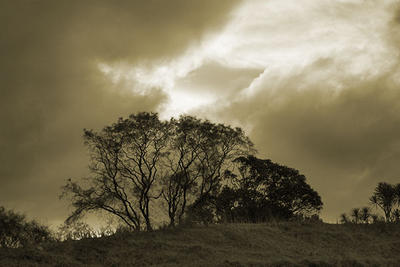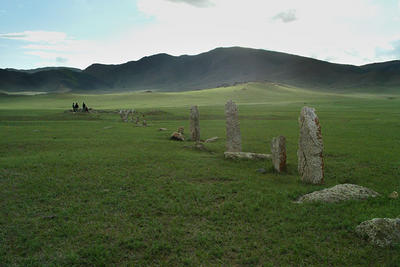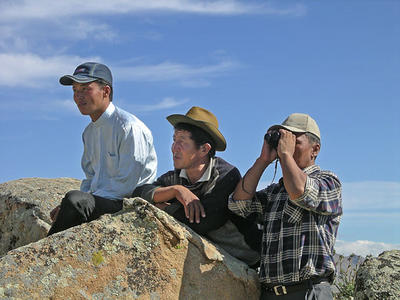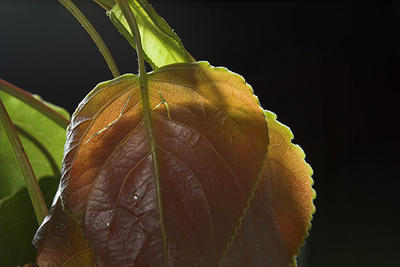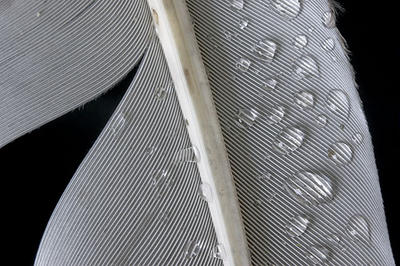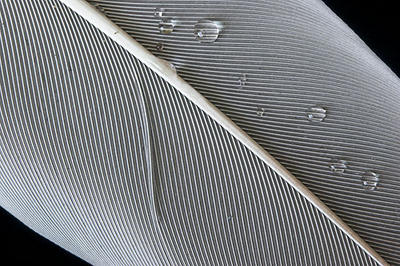 Then it all fades into grey as thunder rolls around the hills—peal after peal, the crack and crash like the beginning of a tremendous rockfall among mountains, continuing for many seconds until finally it develops into a huge, reverberating boom. Perhaps a few seconds’ silence—or none—then the next crack and boom... it goes on and on. Occasionally I see a flash of sheet lightning, but mostly it’s just that phenomenal thunder. You hear it; you feel it shiver through you; you feel tiny; you feel as relevant as a lone ant on an endless beach. You feel full of life, like those swallows flickering over the spring field in front of the house.
Then it all fades into grey as thunder rolls around the hills—peal after peal, the crack and crash like the beginning of a tremendous rockfall among mountains, continuing for many seconds until finally it develops into a huge, reverberating boom. Perhaps a few seconds’ silence—or none—then the next crack and boom... it goes on and on. Occasionally I see a flash of sheet lightning, but mostly it’s just that phenomenal thunder. You hear it; you feel it shiver through you; you feel tiny; you feel as relevant as a lone ant on an endless beach. You feel full of life, like those swallows flickering over the spring field in front of the house. Still no wind.
The rain’s moving up the valley, a grey veil so featureless it seems nothing could possibly exist behind it.
Perhaps nothing does.
From the corner of my eye, a glimpse of lightning, a jagged needle of light. Seconds pass, then the crack and roar of thunder. Leaves begin to shiver and sway. The rain’s closer now. Lost, I watch the faded distant hills, looking for nothing. Just lost. Then, right where I’m gazing, a lightning bolt connects sky and land—a shriek of light, a momentary scarring of the senses. There’s colour in it—an ultra violent ultra violet.
After the thunder, a damp gust, bringing rain1. The darkness begins to lighten, becoming a flat, insipid half-light matched by the disappointing rain. Steady; wet; neither driving nor drizzling; just monotonous, boring rain. The artwork on my verandah, chalked there just this morning by a person of great talent and potential, is getting wet and I’m hoping it won’t wash away; I’d like to enjoy it for a little while longer.  In the middle of the paddock, depressed sheep stand, ears drooping, occasionally shaking a shower from a soggy fleece. For as long as I can remember, I’ve noticed the feeling of deflation when you first sense the storm weakening; when you know there’s no more wildness. Everything’s an anticlimax. I wonder why it seems so sad, and it occurs to me—just now, in fact, as I write this—that perhaps it’s because, when the storm passes, less is possible, in the sense that more is predictable. Or maybe it’s because, during a storm, what you can do is more constrained—paradoxically, because more is possible, you can do less. All you can really do is batten down the hatches, sit tight and hope it leaves you unscathed. With that inability to do much (or anything) comes a sense of freedom—if you can do nothing, no one, or nothing, expects much (or anything) of you.
In the middle of the paddock, depressed sheep stand, ears drooping, occasionally shaking a shower from a soggy fleece. For as long as I can remember, I’ve noticed the feeling of deflation when you first sense the storm weakening; when you know there’s no more wildness. Everything’s an anticlimax. I wonder why it seems so sad, and it occurs to me—just now, in fact, as I write this—that perhaps it’s because, when the storm passes, less is possible, in the sense that more is predictable. Or maybe it’s because, during a storm, what you can do is more constrained—paradoxically, because more is possible, you can do less. All you can really do is batten down the hatches, sit tight and hope it leaves you unscathed. With that inability to do much (or anything) comes a sense of freedom—if you can do nothing, no one, or nothing, expects much (or anything) of you.
It’s a fascinating paradox: the more you’re constrained, the more you’re free to enjoy just what’s happening. In The Snow Leopard, Peter Matthiessen relates his meeting with Karma Tupjuk, the incarnate lama of Shey2. Tupjuk is partially crippled, probably unable to leave his austere home, and Matthiessen enquires about his feelings towards that fact. The answer, Matthiessen says, strikes him like a blow to the chest: Tupjuk laughs out loud, indicates his crippled legs and waves his arms to his world, crying out, “Of course I am happy here! It’s wonderful! Especially when I have no choice!”
I think I’m just beginning to understand a little of what he meant.
1 pinched from T.S. Eliot’s The Waste Land. The title was too.
2 Matthiessen, P. 1979: The Snow Leopard. London, Harvill. 312 p. ISBN 0-00-272025-6. The account of the meeting is included in the November 14 chapter
Photo 1: No, it's not Crystal Mountain/Shey, and it's not the Pohangina Valley. It's Park Stream, a major tributary of the Mungo River on the West Coast of NZ's South Island. Rob and I were there in March this year, and this was what we saw from Mungo Hut on our last morning. That dark streak across the sky is the shadow of a mountain.
Photo 2: Artist at work.
Photos and words copyright 2005 Pete McGregor
